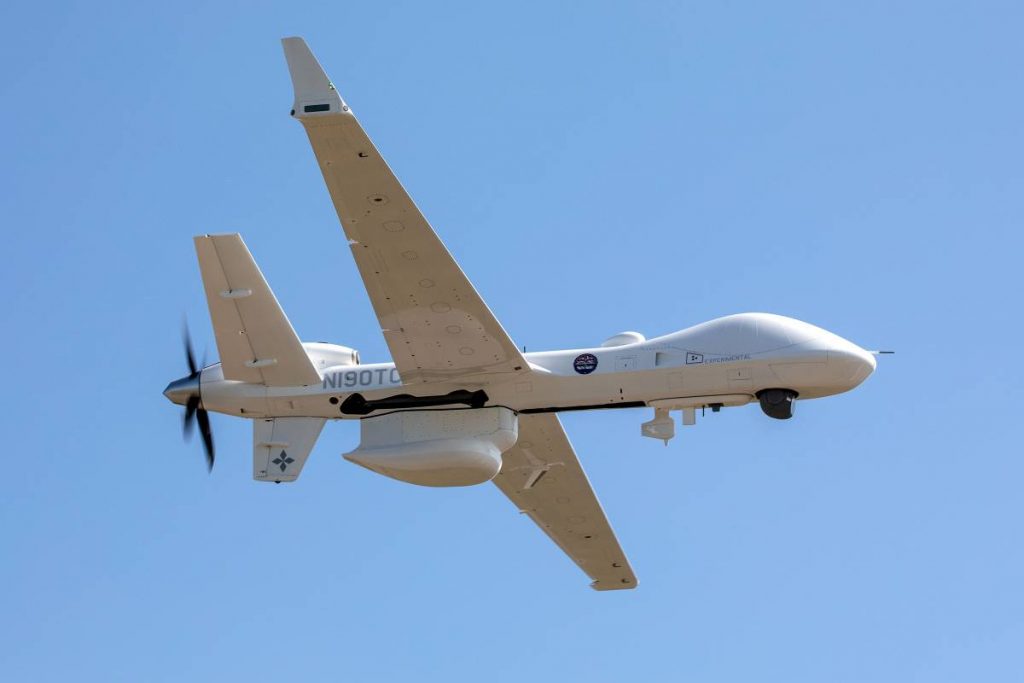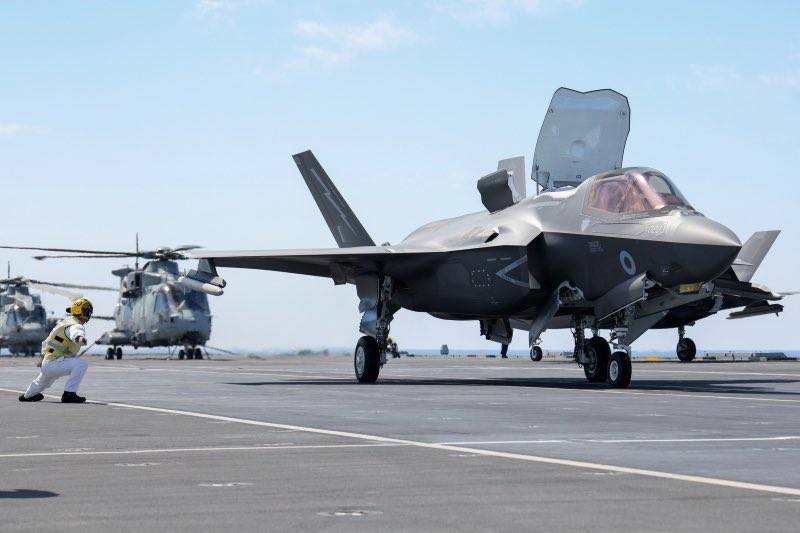The UK has ordered 16 Protector aircraft from General Atomics-Aeronautical Systems Inc (GA-ASI), all of which will be based at RAF Waddington, the RAF’s ISTAR hub…reports Asian Lite News.
A pre-production example of the UK’s new Protector aircraft has taken to the UK skies as part of preparations for the arrival of Protector to RAF Waddington.
The air station has been selected as the home of the Protector International Training Centre, as part of a £94 million investment into infrastructure improvements to assist with housing the aircraft ahead of its entry into service in 2024.
The UK has ordered 16 Protector aircraft from General Atomics-Aeronautical Systems Inc (GA-ASI), all of which will be based at RAF Waddington, the RAF’s ISTAR hub.
Speaking at RAF Waddington, Defence Secretary Ben Wallace said: “Today marks a huge milestone in the Protector programme, bringing us one step closer to delivering this world-leading capability to the RAF.”
“This £94 million investment cements RAF Waddington’s place as the UK’s ISTAR hub, ensuring our Protector fleet can operate safely and effectively for many years to come.”
A key feature of the investment at RAF Waddington will be the development of a new campus which will include the Protector International Training Centre.
The Ministry of Defence said that new campus will support many jobs in the local area, with contracts awarded in the coming months for infrastructure improvements at the base.
The campus will feature new Single Living Accommodation for Protector ground crews, a hangar, office facilities, a new road to the Protector area of RAF Waddington and a new taxiway.
Operating this summer from the Lincolnshire station, the SkyGuardian aircraft has undertaken a number of sorties showcasing its impressive capabilities while also providing vital information for personnel at RAF Waddington preparing for the aircraft’s permanent arrival in 2024. SkyGuardian will be known as Protector when it enters RAF service.
According to the Ministry, the investment marks an important step in the development of the revolutionary Detect and Avoid technology, permitting Protector to fly in unsegregated airspace safely – as the world’s first Medium Altitude Long Endurance (MALE) Remotely Piloted Aircraft System, Protector will significantly boost the RAF’s armed Intelligence, Surveillance, Target Acquisition, and Reconnaissance (ISTAR) capability.

Chief of the Air Staff, Air Chief Marshal Sir Mike Wigston said: “The Protector aircraft is a huge leap forward in performance and autonomous technology. It can fly for 40 hours anywhere in the world, providing critical surveillance and precision strike to protect the UK and our allies.”
“As the lead customer for this aircraft, I am delighted the Royal Air Force is once again at the cutting edge of air power innovation.”
Protector will be able to conduct missions of up to 40 hours and fly in non-segregated civil airspace allowing it to respond rapidly and offer flexibility to deliver an array of military missions and support to civil authorities, including search and rescue.
ALSO READ-Centre approves procurement of 56 transport aircraft from Airbus Defence




